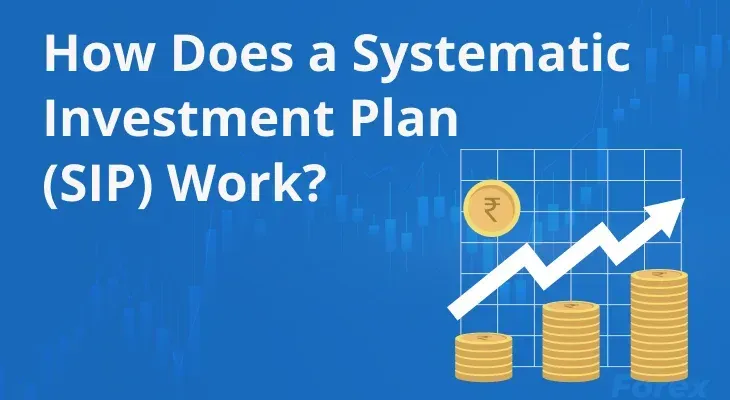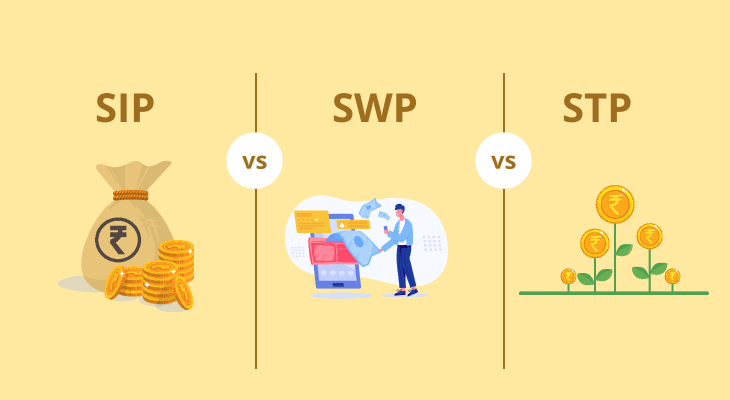
How Does a Systematic Investment Plan (SIP) Work?
With inflation on the rise, the cost of living is reaching unprecedented levels. Therefore, it is pivotal to invest your money in instruments that are profitable, reliable, and relatively safe. One of the easiest ways to start your investment journey is a Systematic Investment Plan or SIP.
SIP is an investment option through which you can invest a fixed amount of money at regular intervals. The amount of the investment as well as the frequency can be decided by you on the basis of your financial goals.
How Does Systematic Investment Plan (SIP) Work?
If you are wondering how an SIP works, the answer is fairly simple. All you have to do is determine a fixed amount of money and the frequency of SIP investment. This frequency can be monthly, quarterly, or annual. Then you need to select a mutual fund scheme and the period of time you wish to invest in said scheme. Following the aforementioned decisions, you can simply set an auto debit for the pre-decided amount and set up your SIP. The fixed amount of money will be debited from your account in line with the frequency of the investment chosen by you.
You can track the performance of your SIP latest Net Asset Value (NAV) of the selected mutual fund in the stock market. Investing through an SIP is an excellent way of investing in mutual funds. By choosing the SIP route, you can accumulate a substantial corpus with the minimal investment of time and effort. A monthly SIP is an ideal option to manage your savings and investments in a systematic manner.
Why Should You Choose An SIP?
There are several reasons why Systematic Investment Plans are counted amongst the most preferred investment instruments. Not only are they easy to invest in and track, they also carry a host of benefits. Here are the major reasons why you must choose an SIP.
Simple And Easy To Manage
A Systematic Investment Plan is a simple investment avenue and one that does not need a high degree of attention or time. You can simply select a mutual fund scheme, choose the SIP amount and period and start investing.
The Power Of Compounding
By choosing a Systematic Investment Plan, you can benefit from the power of compounding. According to this principle, the return earned on your investments gets reinvested in the investment pool. This leads to the compounding of your investment income or earning return on return.
Flexibility
A Systematic Investment Plan is highly flexible. Not only can you choose the mutual fund scheme you wish to invest in, but you can also select the amount of the investment, the tenure of the investment, and the frequency of each installment. What is more is that you can increase your investment in an SIP by choosing the Top-up option (when required).
Rupee Cost Averaging
One of the elements that make Systematic Investment Plans an excellent investment tool is Rupee Cost Averaging. This principle leads to your aggregate investment cost staying more or less constant, even in the face of market fluctuations. When the Net Asset Value of the selected fund is high, you get allocated a lesser number of units. On the contrary, a higher number of units gets allocated to you when the NAV of the mutual fund falls.
High Return
Investing through an SIP can enable you to earn a higher return as compared to conventional fixed-income tools. However, since SIPs are market-linked investments, there is a risk element attached to them owing to market volatility.
Financial Discipline
Another key benefit of Systematic Investment Plans is that they can be the conduit through which you can inculcate a better financial discipline in your spending habits as well as your overall financial behaviour. Since a fixed amount of money is to be debited from your account by way of standing instructions, you can manage your expenses in a more prudent manner.
How You Can Achieve More With SIPs?
On the surface, a Systematic Investment Plan may appear to be an investment tool through which you can plan regular investments in a hassle-free manner. In reality, however, there is so much more that you can achieve through SIPs. Here are some of the things you ought to keep in mind in order to make the best of your investment in an SIP.
Select The Right Mutual Fund Scheme
The key to earning high returns from your SIP investment is selecting the right mutual fund scheme. This decision should be driven by your financial goals, risk appetite, and investment horizon.
Select The Right Amount For Your SIP Investment
The second important decision you must take is the amount of money that ought to be allocated to a Systematic Investment Plan. This amount should be determined after considering your income, expenses, and financial goals.
Select The Right Frequency For Your SIP
It is pivotal to choose the right frequency for your investment in an SIP. You can opt for monthly SIPs, quarterly SIPs, or annual SIPs.
Stay Invested For The Long Term
The returns from Systematic Investment Plans tend to be higher over the long term. Therefore, it is advisable to stay invested in your SIP for a long time.
Do Not Put All Your Eggs In The Same Basket
Since SIPs are linked to the market and are not immune to the turbulence that is characteristic of the market, it is prudent to invest in several SIPs. The key is to choose a diversified set of plans to balance your investment portfolio.
A Systematic Investment Plan is an excellent tool to invest a fixed sum of money for a long period of time. Not only can you enjoy relative convenience from such an investment, you can also benefit from a high degree of flexibility, power of compounding, and rupee cost averaging.
At m.Stock, you can invest in more than 5,000 mutual fund schemes through either the SIP route or lump-sum investment. We charge zero commission and offer a one click mode of subscription to an SIP. Visit m.Stock now and enjoy a paperless process of investing in a Systematic Investment Plan.
SIPs let you invest small amounts regularly, making it easier to stay consistent with your goals. With time, your money grows faster through compounding, helping you get the most out of your investments. Try our SIP Calculator to see how your money can grow and make smarter plans for your future.
FAQ
What is a top-up SIP?
Top-up SIP is an option through which you can increase the amount of your SIP investment by a fixed percentage. This way, you can modify your investment in mutual funds in line with your increased income, savings, and revised financial goals.
What is the power of compounding?
Power of compounding is a principle which leads to higher return on investment by way of the reinvestment of periodical return on said investment. In simple terms, it means earning return on principal plus accrued interest or return.
What is meant by Rupee-cost averaging?
Rupee-cost averaging is a principle through which investors can benefit from the fluctuations in the Net Asset Values of their SIPs. When the NAV falls, a higher number of units gets allocated to the investor. Whereas when the NAV increases, a lower number of units gets allocated.


